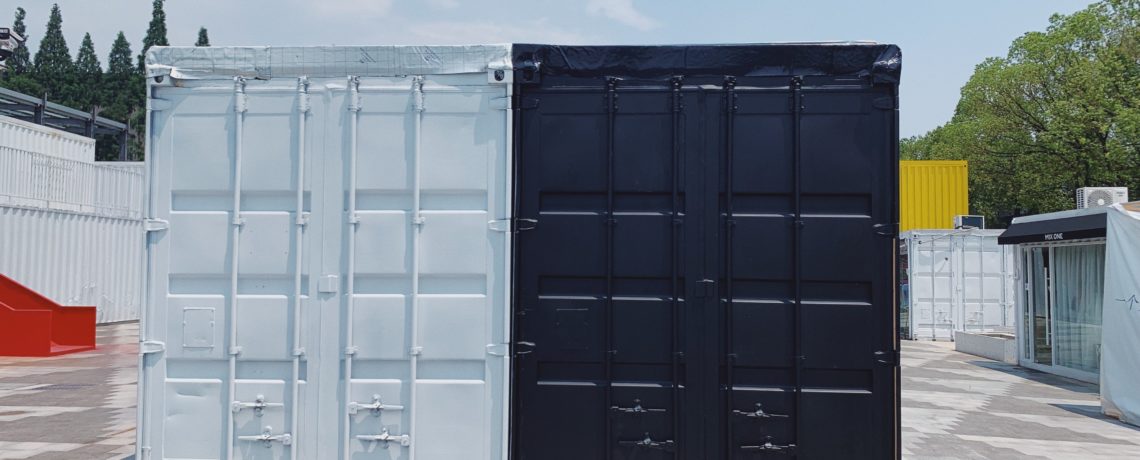
The Spinning Wheels of Mobile Storage Logistics
Introduction
Mobile storage is particularly involved in logistics due to the scheduling and delivery of portable containers to customers. Once loaded, these containers are delivered to a warehouse where they will be stored until the customer either wants these items redelivered or would like to access the contents at the storage facility. In the mobile storage business, logistics has a major impact on operations and ultimately affects costs, revenue and profits.
Background & Problem Analysis
Looking at US companies, there is a huge gap in the types of information provided on websites along with a lack of functionality to schedule deliveries, shop for goods, and interact with customers. Operational logistics is the most difficult aspect to manage because there are so many moving parts and uncontrollable variables (traffic, customer schedule changes, weather, etc.).
Among many requirements, managers wanted a solution that could integrate with current systems while delivering a system that could reduce the number of processes necessary to quickly adapt to any unforeseen changes in scheduling. Managers also wanted a user interface that gave customers the ability to complete tasks without the direct involvement of customer service representatives.
This case study presents a brief overview of the Analysis and Design stages involved in developing an Information Architecture strategy. The Information Architecture diagrams presented show only one piece of the entire information infrastructure which would include integration with the organizations’ current IT systems along with many other factors.
Approach
Interviews were conducted with logistics experts and users of storage services. From these initial interviews it was clear that there were two main audiences – individuals and business users.
Interviews also revealed that potential and current customers wanted a simple information gathering and streamlined moving process starting with the gateway to this experience – the website.
Key requirements from both user groups were identified and a few (of many) are listed below:
- a section where customers could view and digitally sign agreements
- a section where customers could schedule, view and edit delivery information
- a section where customers could purchase supplies without the immediate need of customer service representatives
- mobile friendly and responsive design
Design Solution
Concept Model
A Concept Model was designed. The main reason I created this Concept Model was to:
- better understand the different types of information needed,
- help determine what parts of the web application to focus on,
- get a high-level view of business processes.
After interviewing logistics experts and users of storage services, I chose to design a model that shows the integration between transportation, storage and customer needs. In this case, understanding business processes would provide a more streamlined web application which would ultimately increase the company’s efficiency, productivity, sales and profits.
Site Map
Based on this information gathered from interviews, I decided to organize the sitemap navigation in a hybrid audience-task based scheme.
Business customers have entirely different use cases so it made since from a marketing perspective to provide landing pages tailored to these specific business needs. It also made since to reduce the number of options for users to simplify the experience.
In refining the websites menu labels, I used open and closed card sorting from optimalsort.com. The results for the open card sort were clear for user created categories with various locks, boxes and tape but inconclusive for items such as various mattress covers, furniture covers, blankets, bubble wrap, film, etc. I decided to use a closed card sort with the new categories created by the previous users along with adding a few others. The results from this card sort are the basis for the final sitemap navigation labels.
User Journey
Several User Journeys were designed based on customer interviews. I created a simple website in a shared server environment to do usability tests using sample pages derived from early versions of wireframe designs. These tests allowed me to observe interaction and navigation which helped identify how efficiencies could be gained through optimizing process flows in the web application. The results were later incorporated into the final wireframe designs.
Wireframes
The testing resulted in my wireframes reflecting a more task based approach. I also wanted to include as much relevant information as possible on a single page allowing a user to immediately make a decision with a minimal amount of information searching.
Conclusion
In reviewing other company websites, most had no way to schedule a delivery (they only allowed quote information), digitally sign agreements, purchase supplies and make payments. When considering how logistics issues affect profits in this industry, I wanted to make sure that all of these options were available.
Project Information
- Category :Business Solutions
- Status : Complete
- Client : Private
- Date : February 4, 2017
- Tags :





